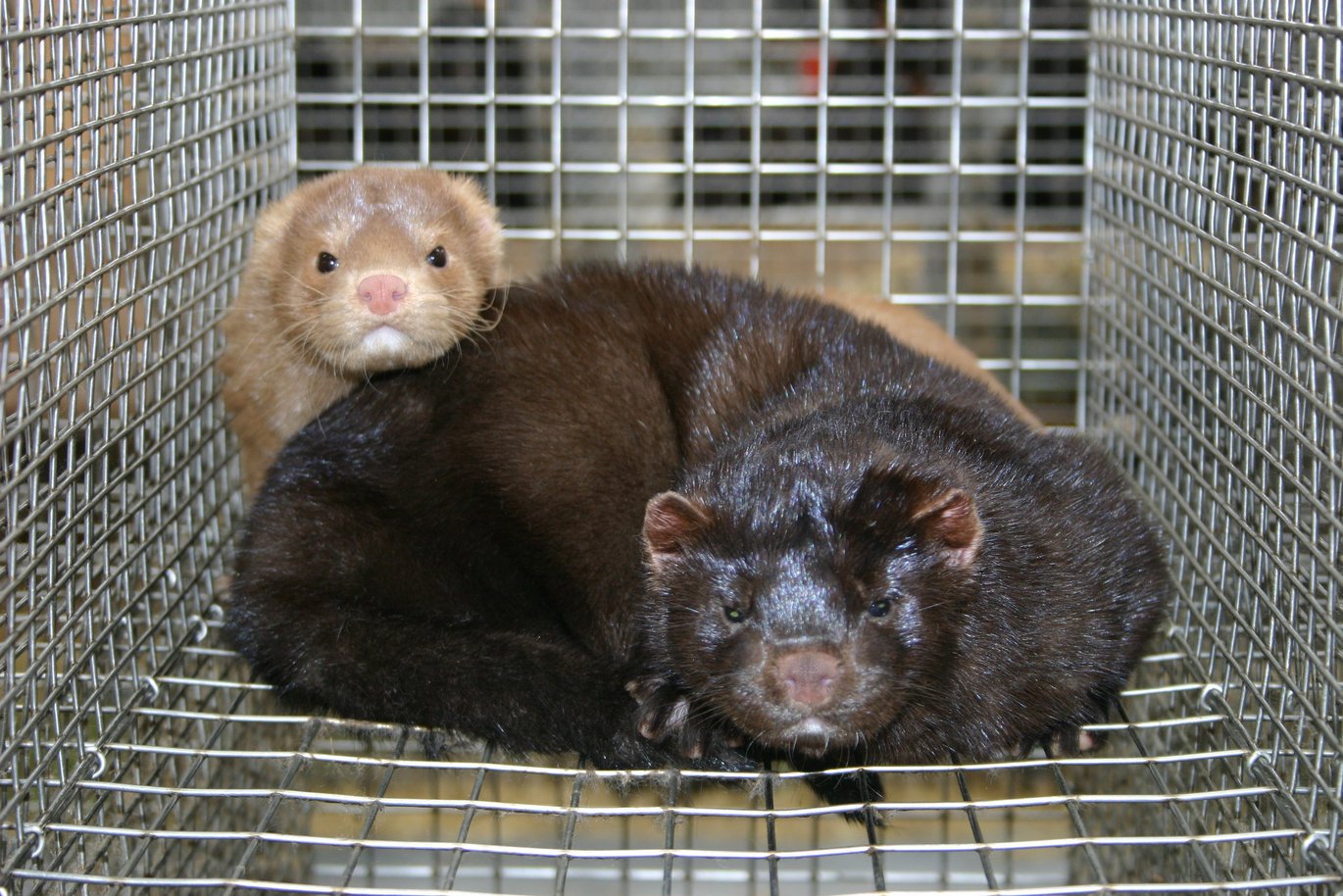Housing mink in groups is not ideal
Mink housed in groups are more aggressive to each other than mink housed two to a cage, even when the mink in groups have had several years to adapt to the situation.

It may sound like a very cosy situation that mink are housed in groups in larger cages where they can socialise with several other mink rather than being housed in pairs where they have only one companion.
There is, however, a flip side to the coin.
- Mink housed in groups are often more aggressive than mink that are paired, says senior scientist Steffen W. Hansen from Aarhus University. There is a possibility that mink adapt to group housing with time. Steffen W. Hansen looked at whether mink tolerance of each other was better on mink farms that had practised group housing for a number of years.
- We have seen in our investigations that differences in management routines and in the genetic coding for social tolerance in mink means that there is variation in the level of aggression exhibited, says Steffen W. Hansen.
Groups compared with pairs
Housing of mink in groups is a relatively new phenomenon in Denmark, but a few mink farms have practised this for a number of years. The experiments in the study were carried out on four of the mink farms that have practised group housing in multi-tiered cages without any major problems with aggression. At each farm, some of the mink were housed in pairs to give a control group for comparison.
Steffen W. Hansen compared the incidence of bite marks, sores and fur-chewing in mink assumed to have adapted to group housing with the mink housed in pairs.
When mink are aggressive they usually bite each other, which can result in sores. This unfriendly behaviour is, however, very difficult to detect before the damage is done. It is therefore important to identify suitable measures to prevent the aggression which not only harms the mink but also reduces the value of its pelt. Counting bite wounds after pelting would appear to be a solution.
The results show that even if a mink farm has housed mink in groups for several years and the farmer believes he has no particular problems with aggression, group mink turn out to have more bite marks than mink housed in pairs.
Mink that are bored may start to chew their own fur or the fur of other mink. This does not harm the mink but reduces the value of its pelt. It appears from the study that there was less fur-chewing with mink housed in groups than with paired mink.
- The reduction in fur-chewing is probably due to the mink being exposed to more social stimulation. The benefit of group housing should, however, be set against the risk of an unstable social structure measured by an increased incidence of sores and bite marks, says Steffen W. Hansen.
Toys reduce boredom
In another experiment, Steffen W. Hansen gave the mink plastic tubes and straw blocks to see if this improvement to their environment would reduce aggression and fur-chewing. Both objects reduced fur-chewing in the groups, but not the incidence of bite marks or wounds.
- This would indicate that these playthings reduced boredom but did not improve social relations, says the senior scientist.
The first experiment was financed by Kopenhagen Fur/Pelsdyrafgiftsfonden, while the second experiment was financed by the Ministry of Food, Agriculture and Fisheries.
You will be able to hear more about these experiments at the annual mink seminar to be held on 18 September 2012 at AU Foulum. Results from a number of research activities in the feeding, breeding, management, behaviour and welfare of mink will be presented. Read more about the seminar here (in Danish).
Further information: Senior scientist Steffen W. Hansen, Department of Animal Science, telephone: +45 8715 7942, email: SteffenW.Hansen@agrci.dk
